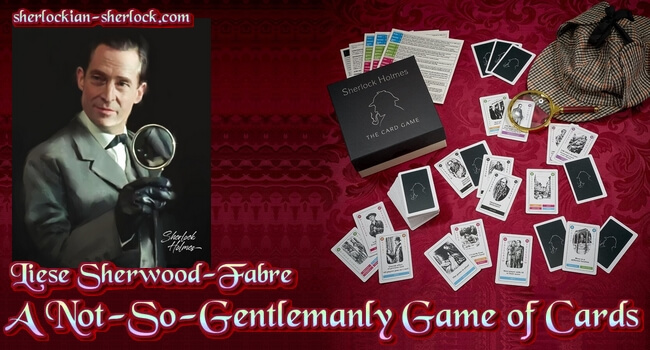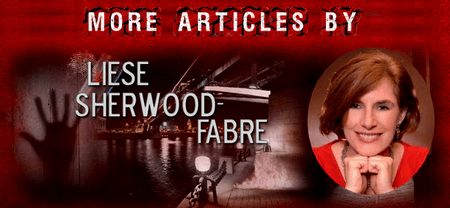

|
A NOT-SO-GENTLEMANY GAME OF CARDS


Author: Liese Sherwood-Fabre, award-winning writer

The card game whist lay behind two deaths in the Canon: Ronald Adair’s in “The Adventure of
the Empty House” and Brenda Tregennis’ in “The Adventure of the Devil’s Foot.” Colonel
Sabastian Moran shot Adair when he confronted him about cheating at the card game, and
Brenda Tregennis died while playing the game after inhaling fumes from a poisonous root.
Despite such deadly consequences, whist was the most popular card game among Victorian elite.
Card playing has a long history, with the first recorded in China around 800 CE, and gambling
even longer (more than 4000 years ago). (1) Whist’s lifespan, on the other hand, was rather short,
spanning a period between the 1700s to the 1900s when it was superseded by bridge. (2)
Originally a game for common men, whist gained in popularity when gentlemen took it up for
amusement at coffee houses and carried it into their clubs. The game became associated with
strategy and mental skills and, thus, appropriate for the upper classes. (3) To play, and win,
required “a good memory, sympathetic partnering, and psychological acumen.” Players also
developed strategies to cheat despite Edward Hoyle’s (the first to set down the rules for the
game) condemnation of such actions. (4)
Similar to bridge or spades, whist involved two teams attempting to collect “tricks.” The game
involved a standard 52-card deck (with ace being the highest card). Teams were determined by
cutting the cards, with the two selecting the highest cards and the other two becoming partners.
The cards were shuffled and distributed to each player, with the last card left face up on the table
during the first trick (and then returned to the dealer’s hand). This card determined the “trump
suit” for the game. A card from the trump suit won the trick, regardless of any other card played.
The player to the dealer’s left, began play by setting down a card. The others played a card in the
same suit unless they didn’t have one. The trick was taken by the highest card, and play
continued until all thirteen tricks had been collected. (5)
The team with the most tricks after the round won and was awarded a point for all tricks taken
after the first six (called “making book”). Additional points could be won by collecting either
three (for two points) or four (four points) of the “honours” (ace, king, queen, and jack in the
trump suit). The first team to accumulate ten points (in standard whist) or five (in short whist)
won the game. In a “rubber of whist,” the winning team was determined by the best of three
games. (6)
For the aristocracy, betting on whist games was considered appropriate because it required
strategy instead of those depending on chance (provided by dice) preferred by the lower classes.
The elite’s participation in such games meant the stakes in whist could be high. Bets as great as
£100,000—such as those by the Duke of Wellington—were the stuff of legend, (7) and
contemporary literature included many morality tales of young aristocrats meeting their ruin
from such excesses. (8) This sort of extravagant gambling was viewed as threatening the
country’s whole social fabric. The aristocracy’s wealth and hierarchy were based on land
ownership and the size of one’s holdings. Gambling losses paid by land transfers could lead to
shifts in both property lines and status within the nobility and, thus, endangered the social
structure of those in power. (9)
Given such stakes, cheating became a fixture within the clubs. Despite Hoyle’s treatise and rules
to the contrary, a variety of techniques were available for players to “gain the upper hand.”
Secret signals, such as a kick under the table, might be passed to one’s partner, or through codes
disguised as comments during play, such as exclaiming “My dear sir,” or including a certain
word like “truly” to indicate a particular suit. Signals using an object, for example a
handkerchief, or using a certain number of fingers when playing a card, could inform a partner of
a good hand or the number of trump cards possessed. Finally, if skilled in the art of shuffling and
dealing, the cheater could control which cards were dealt to him and his partner. (10)
According to Watson, Ronald Adair’s own card playing was both honorable and modest. His
losses or winnings were well within his income, despite being a member of several clubs and
playing almost every day—until he was paired with Colonel Moran and won much more than his
usual five pounds. While the technique Moran used to win at the Bagatelle Card Club was not
specified, Ronald Adair was clever enough to spot it and paid with his life.
Liese Sherwood-Fabre’s first two cases of young Sherlock Holmes are now available as an
eBook boxed set and can be read through Amazon’s Kindle Unlimited program or for a lower
combined price than the single books. This set can be found here:
Early Files Sherlock Holmes Cases (Ebook)

Resources:
1) www.gambling.net/history
2) www.britannica.com/topic/whist
3) londonhistorians.wordpress.com/2014/06/05/gambling-in-londons-most-ruinous-gentlemens-clubs
4) regency-explorer.net/whist
5) www.britannica.com/topic/whist
6) www.kristenkoster.com/a-regency-primer-on-how-to-play-whist
7) londonhistorians.wordpress.com/2014/06/05/gambling-in-londons-most-ruinous-gentlemens-clubs
8) scholarworks.iu.edu/dspace/handle/2022/25690
9) muse.jhu.edu/article/678621/pdf
10) regency-explorer.net/whist
Thank you very much for this article Liese Sherwood-Fabre.

Recommended articles:

Read more:
Articles by Liese Sherwood-Fabre

|
|












